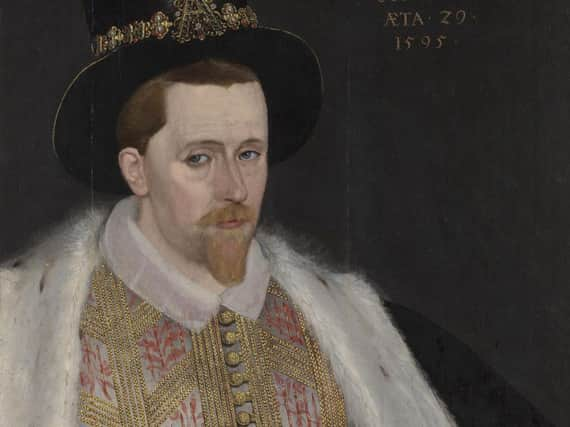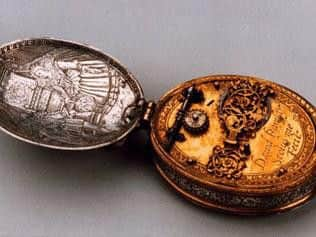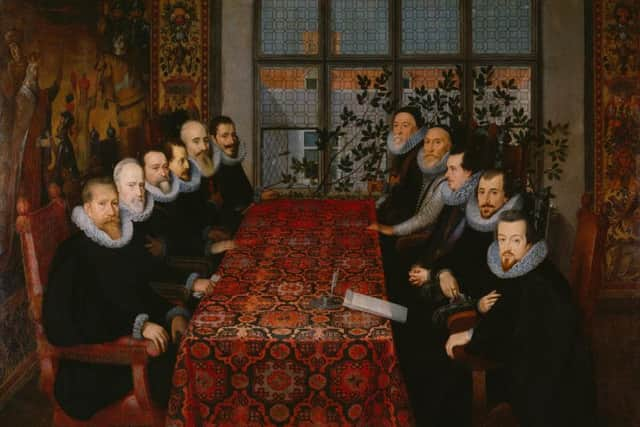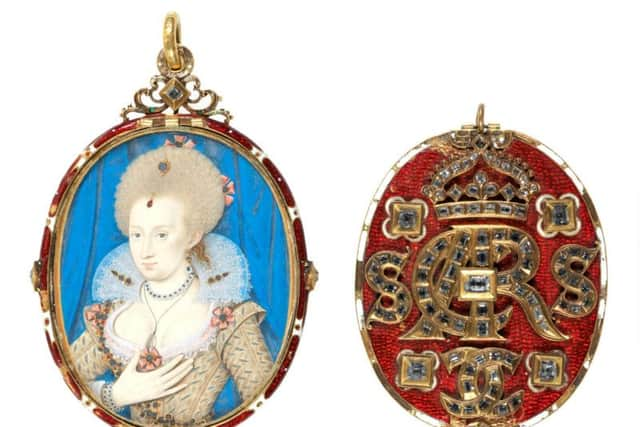First ever 'King of Great Britain' to be celebrated in Edinburgh exhibition - 400 years after Union of the Crowns


The Scottish National Portrait Gallery will be playing host to the first major exhibition in 40 years dedicated to the life of King James VI, the only son of Mary Queen of Scots.
Centuries-old paintings, miniatures, costumes, textiles, books, coins, manuscripts and jewellery will all be brought together for the first time for the five-month exhibition, which is billed as a showcase of “a wealth of artistic and cultural riches of the Jacobean period”.
Advertisement
Hide AdAdvertisement
Hide AdIt will draw on loans from the Queen’s own Royal Collection, as well as the V&A, the Tate, and National Portrait Gallery in London, and the National Museum of Scotland in Edinburgh.


The exhibition, which will focus on James’s turbulent childhood and youth, will recall how he was crowned King of Scotland when he was just a year old due to the forced abdication of his mother in 1567.
Highlights include a pocket watch created by James’s clockmaker in 1615, a “unite coin” produced to celebrate his reign over Scotland and England, and drawings for costumes for his court.
James was the product of Mary’s ill-fated marriage to Henry, Lord Darnley, whose assassination in early 1567, and Mary’s subsequent over-hasty marriage to one of its perpetrators, Lord Bothwell, triggered events that led to Mary’s downfall.
Advertisement
Hide AdAdvertisement
Hide AdOn the death of English queen Elizabeth I, his cousin, in 1603, he became James I of England, as well as James VI of Scotland, famously proclaiming himself as “King of Great Britain”.


But despite promising his subjects that he would regularly come back to Scotland, he did so only once.
James married Anne of Denmark in 1589 and the couple had three children who survived childhood – Henry, Elizabeth and Charles (the future King Charles I).
He ruled Scotland and England together for 22 years until he died in 1625. Next year’s exhibition, Bright Star: The Art and Life of King James VI & I, will show how his court in both Edinburgh and London became “a great centre for creative and artistic innovation and renowned as a centre for literature and entertainment”.
Advertisement
Hide AdAdvertisement
Hide AdThe National Galleries of Scotland, which is staging the exhibition from 20 June-21 November, said it would chart the “defining moments of his life”, including his coming-of-age as a monarch, his marriage, the impact of the Union of the Crowns, and the decision to relocate from Scotland to London with his family.


Christopher Baker, director of European and Scottish art and portraiture at the National Galleries of Scotland, said: “Visitors to this important exhibition will be immersed in the visually dazzling culture of the late 16th and early 17th centuries – a time when many questions we are now concerned with, such as what sort of government is legitimate, were being first asked.“James’s court was sophisticated and European in outlook and the exhibition will reveal its full splendour.”
Kate Anderson, senior curator in European and Scottish art and portraiture, added: “The objects in this exhibition not only shed light on the fascinating life of James VI & I, his family and members of his court, but are unique and exquisite works of art made by highly skilled artists and craftspeople.”